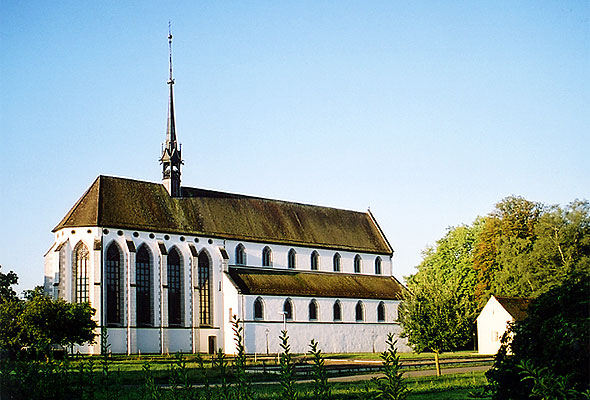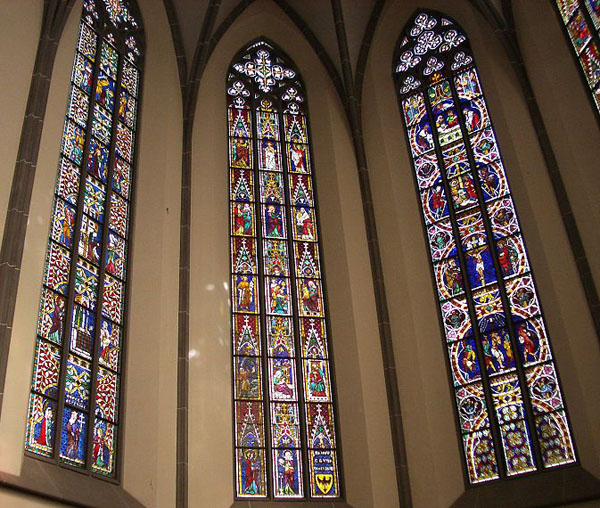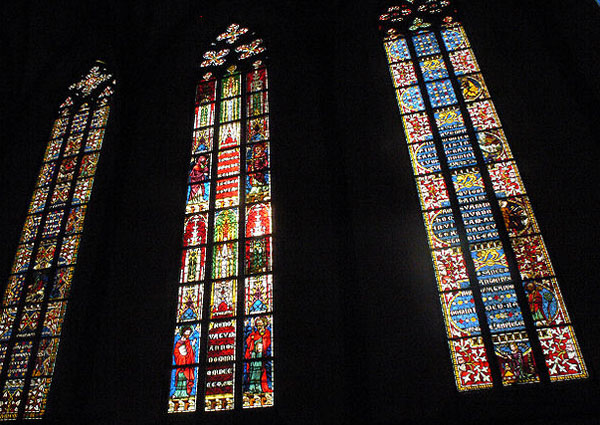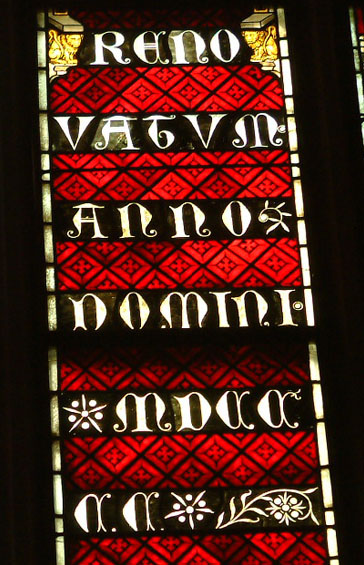April 20, 2009
Königsfelden Abbey
The April 2009 issue of Vidimus features an interview with medieval stained glass historian Madeleine Caviness, who is asked to name five places which they think every stained glass enthusiast ought to see before they die:
'Only five’ she exclaimed, 'It’s not easy but I’ll kick off with the Sainte Chapelle in Paris, Canterbury Cathedral in England, St Remi in France, Koeningsfelden in Switzerland [Fig. 9] and lastly, the extraordinarily rich windows of Cologne Cathedral that range from the 13th to the 16th century'.
I've only been to one of the sites, Sainte Chapelle, and I have to say I would not include it in my top 5 (bit too 'jewel box' for my taste). More surprising to me is that one of the places she mentions I'd never heard of - Koeningsfelden. I tried to do a search for it and came up with nothing at all. Not a thing. That is, until I realized I needed to search for it as Königsfelden, with the umlaut 'ö' instead of the anglicized 'oe'. That did it.
Eventually, I found the official website from the Convent Church Königsfelden, now a part of the Museum Aargau. Very nicely done too, especially the section called the Window Cycle. Every 14th century window is pointed out and described iconographically. There is a very nice St. Francis Sermon to the Birds. Also, a rather gruesome Beheading of St. John the Baptist, that features some early, rudimentary attempts at using linear perspective in stained glass design.
I also found a nice page of images giving some longer perspective shots in Wikimedia Commons:Category:Königsfelden Abbey


One curious detail stuck out in a quick look through the windows. The original windows date from the early half of the 14th century, but were extensively restored in 1900. The website gives a good indication what is original and what is new.
But the windows themselves tell us they've been restored. Notice the center bottom panel.

image from wikimedia commons site

image from Flickr page with Königsfelden Windows
It says "Renovatum Anno Domini MDCCCC" and translates as "Restored in the Year of our Lord 1900". Now that's documentation.
Posted by Tom at April 20, 2009 10:45 PM